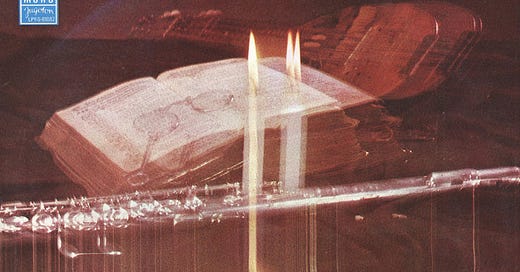Genre of the Day - Starogradska muzika
Album of the Day - Kad mi pišeš, mila mati by Živan Milić (1973)
Even while writing this column, I sometimes take the titles of genres for granted. But when you read between the spaces between each letter of a word, it brings questions to mind: what makes us blindly accept that certain words denote a type of music? With some genres, titles are obvious; with some broader ones, digging a little deeper lays preconceived notions bare. Nearly seven months in, today’s genre made me realize I’ve never tried to track down an intellectual definition of folk music. Musicologists have not come to an agreement on the definition of folk music, though, so there’s no consensus to base this on. The term attempts to cover such a broad, globally-spanning range of traditions; finding just one common denominator is difficult. Does the fact that it’s passed down from generation to generation define it? Does it inherently transmit cultural identity? Is it that it is kept as a living tradition rather than written? In the 1960s, some academics attempted to resolve this issue by switching gears towards ‘traditional music.’ Nonetheless, the Newport Folk Festival playing near where I am this weekend indicates the term has gone nowhere among, well, most folk.
Though often true, folk music is often unanimously associated with rural, bucolic settings, such as in falak or zhabdro gorgom. Today’s genre, though, shows us that the high-velocity mixing of values, cultures, and memories in urban settings can enrich folk traditions just as rural calmness and collectivism often ascribed to folk music does. A disproportionate amount of my time in this column in the Balkans has been geared towards the grandeur of the region’s polyphonic singing: today, we’re served with the sound of the cities.
New styles of urban music built off of older forms such as sevdalinka love songs and the music of traveling Romani musicians characterizing a piece of urban musical expression. It affirmed newly developing local identities emerging across the Balkans in the early 20th century at a critical juncture after Balkan nation-states pushed up through the cracks of the Ottoman and Austro-Hungarian empires. Like Vietnamese bolero, starogradska muzika (translating to ‘old city music’) went on to act as a nostalgic balm to the spirit in the wake of war and chaos. Urban folk music became popular on the radio in the 1930s; following the destruction wrought in the Balkans following the two World Wars, starogradka muzika fully emerged as tavern performers captured the feeling of yearning for simpler, more peaceful times in the towns before the 20th-century’s modernity and clashes had upended what seemed rosier times. It was a revival of sorts that coalesced folk styles from earlier in the century into a form deemed more authentic than contemporary, new folk music that followed similar patterns from Belgrade and Zagreb to Skopje and Sofia. Performers donned traditional city dress, and sang with an intensity belying older song selections’ mournful, romantic, and pining themes set to simple, popular instrumentation, often featuring the violin, clarinet, bass, and tamburica lutes.
On today’s album, nostalgia yields drama as an illicit imagined escape from time beginning with the dramatic, rich plaintive strings and rippling piano glissandos of “Moj Spomenče” (“My Memorial”). On “Što to šušti bagrem beli” (“What is that rustling white acacia”), slow accordions and fluttering guitar compliment his earnest vocal depth as he maximizes the emotion drawn out of each elongated vowel. The gentle tamburica strums, swinging violins, and his near-operatic voice on “Milkina kuća na kraju” (“Milka’s house at the end”) paint a more sun-dappled and joyful picture through the unparalleled nostalgic strength of times inside a particular bygone abode. Though nostalgia may be only imagination, starogradka muzika reminds us urbanites to turn to the commanding buildings and busy streets of our dense surroundings and take in their beauty in facilitating community and joy through history. In the process, doing so might help us appreciate the tangible present blessings of city life.




